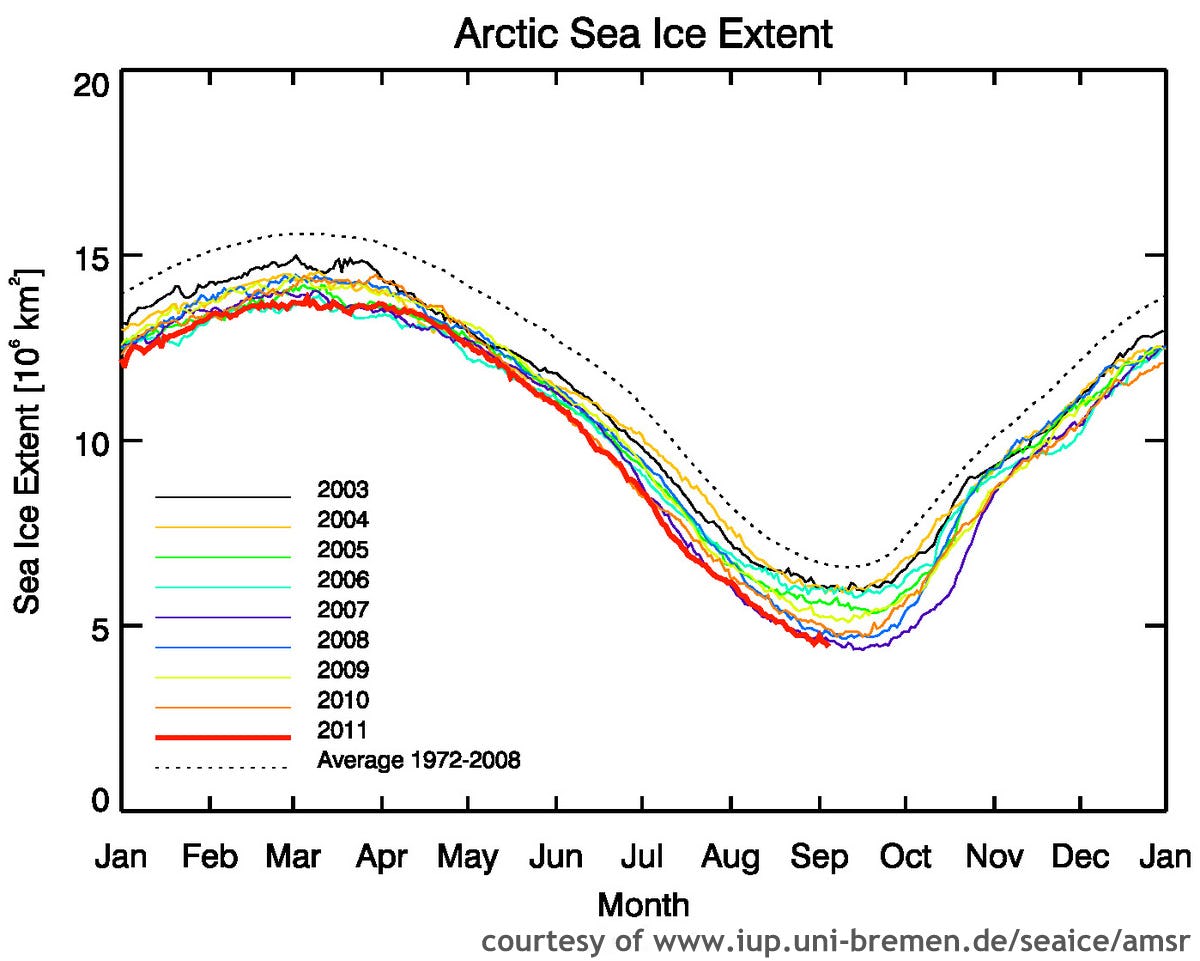Arctic Sea Ice Extent Reaches New Historic Minimum

Arctic sea ice extent since 1979. Diagram: Institute for Environmental Physics, University of Bremen
Scientists at the University of Bremen confirmed today that on September 8, 2011 Arctic sea ice extent reached a new all-time low, superseding the previous low set in September 2007.
Arctic sea ice extent undergoes a pronounced yearly cycle, with about 15 million square kilometers in March and 5 million square kilometers in September. Since the beginning of satellite-based observations in 1972, Arctic summer ice has retreated by about 50 percent.
The previous historic low was set with 4.267 million square kilometers in 2007. Scientists estimate this to be the lowest extent since the last climate optimum roughly 8,000 years ago.
According to the working group of Prof. Georg Heygster at the University of Bremen ice extent on September 8, 2011 reached a minimum of 4.24 million square kilometers, about 27,000 square kilometers or 0.6 percent below the previous record. The current ice extent is likely to decrease further as melting can be expected to continue until the second half of the month.
Furthermore, sea ice concentration along the edge of the ice shield has declined significantly, even in comparison to 2007. According to maps provided by the University of Bremen thinner and more porous ice appears to protrude further into the ice field than it did during the previous record year of 2007. These loose assemblies of ice floes, especially near the Chukchi sea, are the most vulnerable to further melting over the next 10-14 days.
Interestingly the rate at which sea ice retreated during the month of August remained below the rate of 2007. One of the explanations for the new absolute minimum thus lies with above average melting early during the summer in May and July.
The National Snow and Ice Data Center (NSIDC) in Boulder, Colorado has not yet released any information about the latest figures from the University of Bremen. The Center’s latest report was released on September 6, 2011, two days before the new record low occurred.